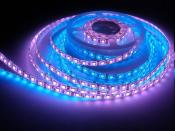Search
Login
Recommended
How to choose (calculate) an electric generator
In order not to make a mistake when selecting a mobile power station, do basic calculations.
Content
General information
The modern rhythm of life is not possible without electricity, the production of electricity can be not only industrial but also autonomous. Mobile power plants have tightly entered our lives.
The modern market offers a huge selection of electric generators for individual needs.
The undisputed leaders in the production of mini-power plants are German manufacturers. Introducing smart technologies, their generators can withstand multiple inrush currents and overloads, and produce ideal current quality for sensitive electronic devices.
Such stations, combined with the legendary Japanese engines, are indispensable assistants wherever autonomous power is required.
In this article, several important tips have been collected, they will help to make up your mind about the station you need, prepare the necessary questions for the seller, and clearly formulate your requirements.
Applying the basics of selecting a station, making the correct calculation of power, choosing a reliable manufacturer, you will receive electricity without worries and problems at any time.
Step-by-step instruction
For the successful use of the station, it is necessary to know the key points and the main characteristics of the consumer and the generator.
step one - active and reactive consumers
It is important to know, for further calculation of the capacity of your station, which consumers will be connected to it.
All consumers by type of load are divided into two groups:
active (ohmic) and reactive (inductive).
Active (ohmic) consumers convert electricity into light or heat. Since the demand for current at the time of switching on does not exceed the level of normal operation, they do not create inrush currents.
Such consumers include: electric lamps, electric stoves, household appliances, small household appliances such as irons, hair dryers, kettles, etc .;
electronic devices such as computers, tablets, televisions, office equipment.
Reactive or inductive consumers in their design have electric motors, so they are at the time of launch and consume a huge amount of electricity, i.e. form inrush currents.
The number of starting currents exceeds the rated power that the consumer consumes during main operation.
Such consumers include: power tools such as jigsaws, drills, grinders;
garden equipment;
more loaded consumers - pumps, air compressors, welding equipment.
Reactive consumers spend part of the energy on the formation of electromagnetic fields.
The power factor cos f is an indicator of the measure of this part of the consumed energy.
In the passport of the purchased device, usually indicate the power and power factor.
If cos f is different from 1, then to find out the actual power consumption, it is necessary to divide the power indicated in the passport by cos f.
For example, if a power of 600 W is written on the instrument, and cos f is 0.6, then in fact the instrument will consume 1000 W from the generator (600: 0.6 \u003d 1000).
Sellers are advised to buy a mini-station with a power reserve, as there are more and more devices necessary for life.
Until recently, the purchase of an air conditioner was not particularly relevant, but the climate is changing and the installation of an air conditioner is becoming vital.
step two - calculation of power consumption
After identifying consumers, it is necessary to summarize the power of all devices planned for connection. The technical data sheet of each device indicates its power.
In order to correctly summarize the power, it is important to consider the starting power of the devices. To do this, it is important to correctly classify electrical appliances as active and reactive.
-
The power of your generator should be at least the total total power and have the required margin of at least 10%. Station \u003d P1 x K1 + P2 x K2 + ... + Pn x Kn. The K factor takes into account the starting power for each device.
-
For consumers with an active load, K \u003d 1-1.6.
-
For consumers with reactive load K \u003d not less than 3.
-
For heavily loaded electric motors K \u003d from 5 to 7.
After all the calculations of the required power, you can proceed to the selection of a suitable station. Do not forget to control the total total power of connected consumers before each start-up of the station, it should not exceed the rated power of the generator.
In the passport of the purchased generator, the nominal power of the station (COP) can be indicated - this is the power for continuous long-term operation at a variable load.
Like any other device, a mobile power plant has its own power factor cos f.
But sometimes manufacturers do not take it into account when specifying the output power, in which case the buyer will have to calculate the actual nominal power himself, making a mathematical calculation, multiplying the power indicated in the passport at the cos f station.
The maximum (peak) power of the station (LTP) is the power that can be received from the station at the time of peak load. Some manufacturers are tricky and indicate in the passport the maximum output power, but you should keep in mind that this implies only a short-term operation of the unit.
step three - which is better: gasoline or diesel generators?
Mini power plants operate either on diesel or gasoline.
The pricing policy is such that, with equal power, diesel generators are more expensive than gasoline generators up to 55%. But the service life of a diesel unit is twice as much as a gasoline one.
Which one to choose is up to you.
We can recommend choosing a gas station if you need a backup, seasonal or emergency power supply. These generators are more convenient in operation due to the lower weight, dimensions and noise level during operation.
If you need to carry out lengthy work (from 8 hours daily), a power of 10 kW is required. - undoubtedly, a diesel power station will do better. The advantages of diesel generators include their durability and long life.
Launched the release of mini-power plants with two-stroke gasoline engines. These stations are cheaper, provide little power, require a special fuel mixture and are designed for short-term operation.
fourth step - three-phase power plants
There are single-phase (220 in.) And three-phase (380 in.) Stations.
Only single-phase consumers can be connected to single-phase generators, it is only necessary to correctly calculate the required power.
380V three-phase power plants necessary for connecting three-phase consumers, they can provide cottages with three-phase wiring of the network with backup electricity.
-
When connecting single-phase consumers to three-phase stations, it is necessary to evenly distribute the load between the phases.
-
Permissible power difference at different phases is not more than 20-25%. Otherwise, phase imbalance and generator failure will occur.
The power consumption of a single-phase load should not exceed 1 \\ 3 of the nominal three-phase output power of the generator, for example, a 6 kW single-phase kettle can be connected to a 6 kW three-phase station.
Example of selection of a mini-power plant
We have a summer house, in summer there are power outages. It is necessary to choose a generator for emergency power supply during short shutdowns. There is a refrigerator, microwave oven, TV and lighting lamps.
The refrigerator is a reactive single-phase consumer, power consumption is 200 watts. (taking into account cos f). The required power reserve of 200% or 400 watts. Total 600 watts.
The light bulb is an active single-phase consumer with a power consumption of 95 watts. Quantity 13 pieces. The required power reserve of 10%, or 9.5 watts. Total: 1235 + 123, 5 \u003d 1358, 5.
The microwave oven is an active single-phase consumer, the power is 750 watts. The required power reserve of 50% or 375 watts. Total: 1125 W.
TV is an active single-phase consumer, power 300 watts. The required power reserve of 65% or 180 watts. Total: 480 watts.
Required generator power: 600 + 1358.5 + 1125 + 480 \u003d 3563.5.
We recommend choosing: a gasoline single-phase station with a rated power of at least 3.6 kW.





